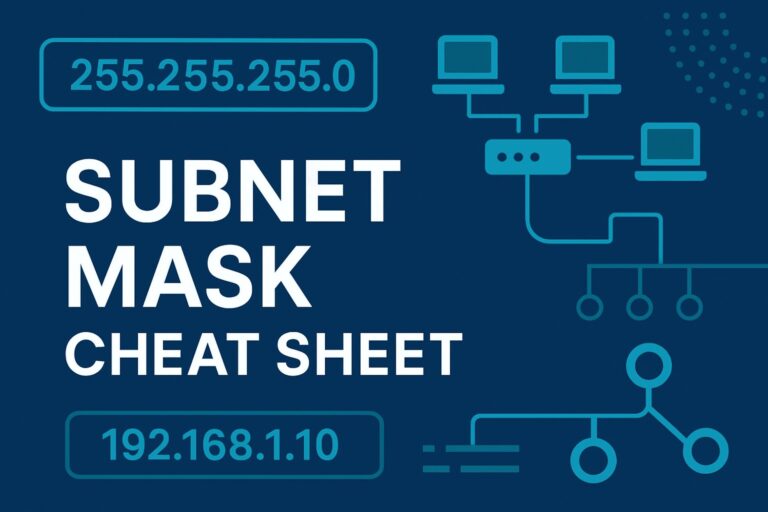As security professionals, we often need to run specialized tools or custom scripts.
On macOS, this can lead to a roadblock: the “can’t be opened because Apple cannot check it for malicious software” error.
While this is a crucial security feature, it can be an obstacle for those of us who need to operate outside the App Store.
This guide explains what this message means and how to safely bypass it when you trust the application’s source.
Why does macOS say it can’t be opened because Apple cannot check it for malicious software?
The error message you’re seeing is from a macOS security technology called Gatekeeper. Its job is to ensure only trusted software runs on your machine.
“Trusted” software is typically identified through two processes:
- Code Signing: Developers use a unique digital certificate from Apple to sign their applications. This signature confirms the developer’s identity and ensures the app hasn’t been tampered with.
- Notarization: Developers can submit their signed apps to an automated Apple service that scans them for known malware. If it passes, the app is “notarized.”
By default, macOS only wants to run apps from the App Store or those that have been notarized.
If an app hasn’t gone through this process, Gatekeeper steps in and shows the warning. It doesn’t mean the app is malicious, just that it hasn’t passed Apple’s automated check.
How to Safely Open Blocked Apps on macOS
Here are a few ways to open an app that Gatekeeper has blocked. Always start with the first method, as it’s the safest.
The Right-Click Method (Recommended)
This is the most straightforward and secure way to create an exception for a single application.
- Locate the App: Find the application in your Applications folder or Finder.
- Control-Click the App: Hold down the Control key and click the app icon (or just right-click it).
- Select “Open”: Choose “Open” from the top of the contextual menu.
- Confirm the Exception: A new dialog box will appear. This time, it will have an Open button. Click it to grant an exception for this app.
macOS will now remember this choice, and you can open the app normally in the future.
The “Open Anyway” Button in System Settings
If you’ve already tried to double-click the app, you can approve it in System Settings.
- Open System Settings: Go to the Apple menu > System Settings.
- Navigate to Privacy & Security: Select Privacy & Security from the side menu.
- Find the Security Section: Scroll down and you’ll see a message that your app was blocked.
- Click “Open Anyway”: Click the Open Anyway button. You may need to enter your password to confirm.
The Command-Line Method (For Advanced Users)
This method removes the “quarantine” attribute that macOS adds to downloaded files. Only use this if you are absolutely certain the app is safe.
- Open Terminal.
- Type the Command: Enter the command below, but don’t hit enter yet.
Bash
xattr -d com.apple.quarantine - Drag and Drop the App: Drag the application’s icon from Finder and drop it into the Terminal window. This will paste the correct file path.
- Press Enter: The quarantine attribute will be removed.
What are the security risks of bypassing Gatekeeper?
Gatekeeper is a valuable control that stops a lot of malware in its tracks. While we sometimes have good reason to bypass it, always approach it with a security-first mindset.
- Always verify your source. Before using any of these methods, be sure you’ve downloaded the software from the official developer or a trusted repository.
- Favor the right-click method. It’s the safest option because it forces you to make a conscious, per-application decision.
- Use the command line with discretion. The xattr command is powerful but removes a safety net entirely for that file. Reserve it for times when you have a high degree of confidence in the software.
Understanding how these features work allows you to make informed decisions, balancing the need for specialized tools with the importance of a secure system.
Frequently Asked Questions (FAQ)
Is this error message a virus warning?
No, it is not a virus warning. It’s a standard macOS security feature letting you know the application developer is not registered with Apple or the app hasn’t been scanned by Apple’s notarization service.
Is it safe to bypass this warning?
It’s only safe if you 100% trust the source of the application. If you downloaded it from a well-known developer’s official website, it’s likely safe. If you got it from a random link, you should avoid opening it.
Will I have to do this every time I open the app?
No. Once you grant an exception using the right-click or “Open Anyway” methods, macOS will remember your choice for that specific app.
Why don’t all developers get their apps notarized by Apple?
Some developers may choose not to for various reasons. The process can add complexity, and some open-source or specialized tools aren’t intended for mass distribution through the App Store model.
Can I just turn Gatekeeper off completely?
While it is technically possible via the command line (sudo spctl –master-disable), it is strongly discouraged. Disabling Gatekeeper entirely would leave your Mac vulnerable to malicious software.
You’ll need to replace /path/to/YourApp.app with the actual path to the application. An easy way to do this is to type xattr -d com.apple.quarantine (with a space at the end) and then drag and drop the application icon from Finder directly into the Terminal window.
Gatekeeper is a valuable security control that prevents a significant amount of malware from ever executing. While we, as security professionals and developers, have legitimate reasons to bypass it, it’s crucial to do so with a security-first mindset.
- Always Verify Your Source: Before using any of these methods, triple-check that you’ve downloaded the software from the official developer or a trusted repository.
- Favor the Right-Click Method: It’s the safest bypass, as it requires a conscious, per-application decision.
- Use the Command Line with Discretion: The xattr command is powerful but removes a safety net. Reserve it for situations where you have a high degree of confidence in the software.
Understanding how these security features work allows you to make informed decisions, balancing the need for specialized tools with the importance of maintaining a secure system. Stay curious, but stay safe.
Feature Image Credit: Simplified Technology







